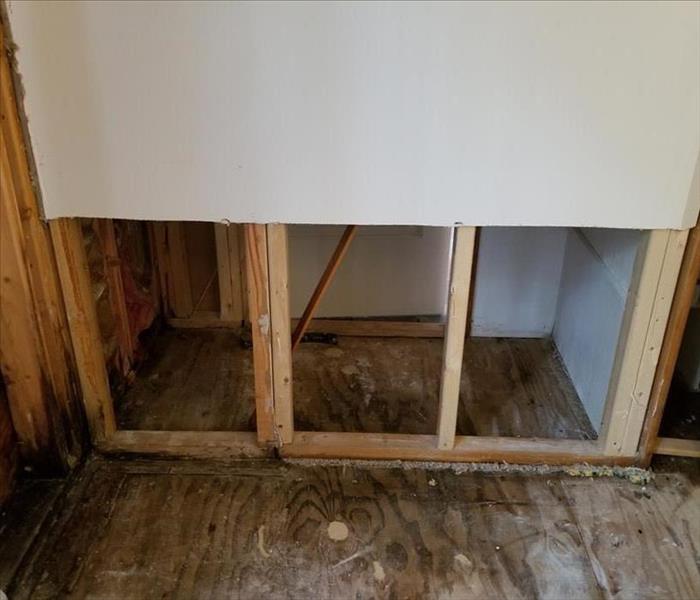When Are Flood Cuts Necessary?
11/10/2021 (Permalink)
Storm or water damage that results in flooding may necessitate a flood cut. This procedure involves cutting out drywall approximately one foot above the highest level of flood damage to assess the presence of moisture behind a wall. Here are several situations when this mitigation method may be necessary.
When Water Damage Occurs
Water damage involves one of three categories:
• Category One water is clean. A Category One leak is typically caused by a broken supply pipe.
• Category Two water or gray water contains chemicals or microbes. This water may come from a dishwasher, shower, or washing machine.
• Category Three water or black water is highly contaminated. This water may contain sewage, solid waste, or toxigenic substances.
A flood cut will probably be necessary for damage involving contamination from Category Two or Category Three water. Category One leaks that make contact with walls without insulation should not require a flood cut and can be dried. Category One water may start to degrade if left standing for days.
After Flooding
Most flood water is Category Three, and necessitates a tear out of porous building materials such as drywall or insulation. If a commercial property is flooded with one foot of water, a mitigation expert will perform a flood cut at the two-foot level. Insulation exposed to any type of water cannot be safely dried, poses an increased mold risk, and will need to be removed and replaced.
If Mold Is an Issue
Contaminated water sources exacerbate the risk of mold growth. Mold can start to grow if water is left standing or excessive moisture persists for 24 to 72 hours. Mold tests may also require that experts make controlled cuts.
Flood cuts are usually necessary after a building is exposed to flooding. If water damage occurs at a commercial property in Mars Hill, GA, contact a water and storm damage restoration service.






 24/7 Emergency Service
24/7 Emergency Service
